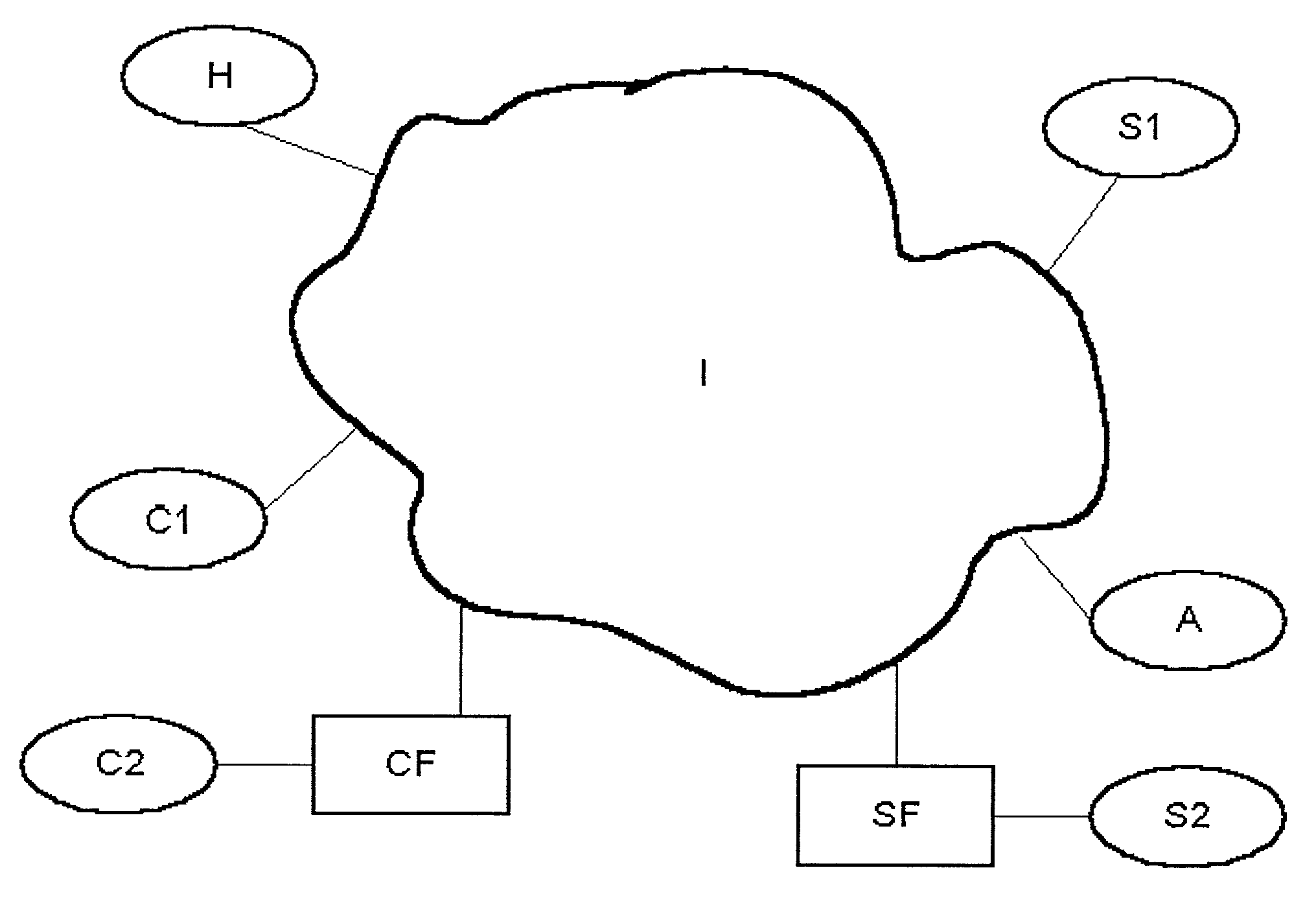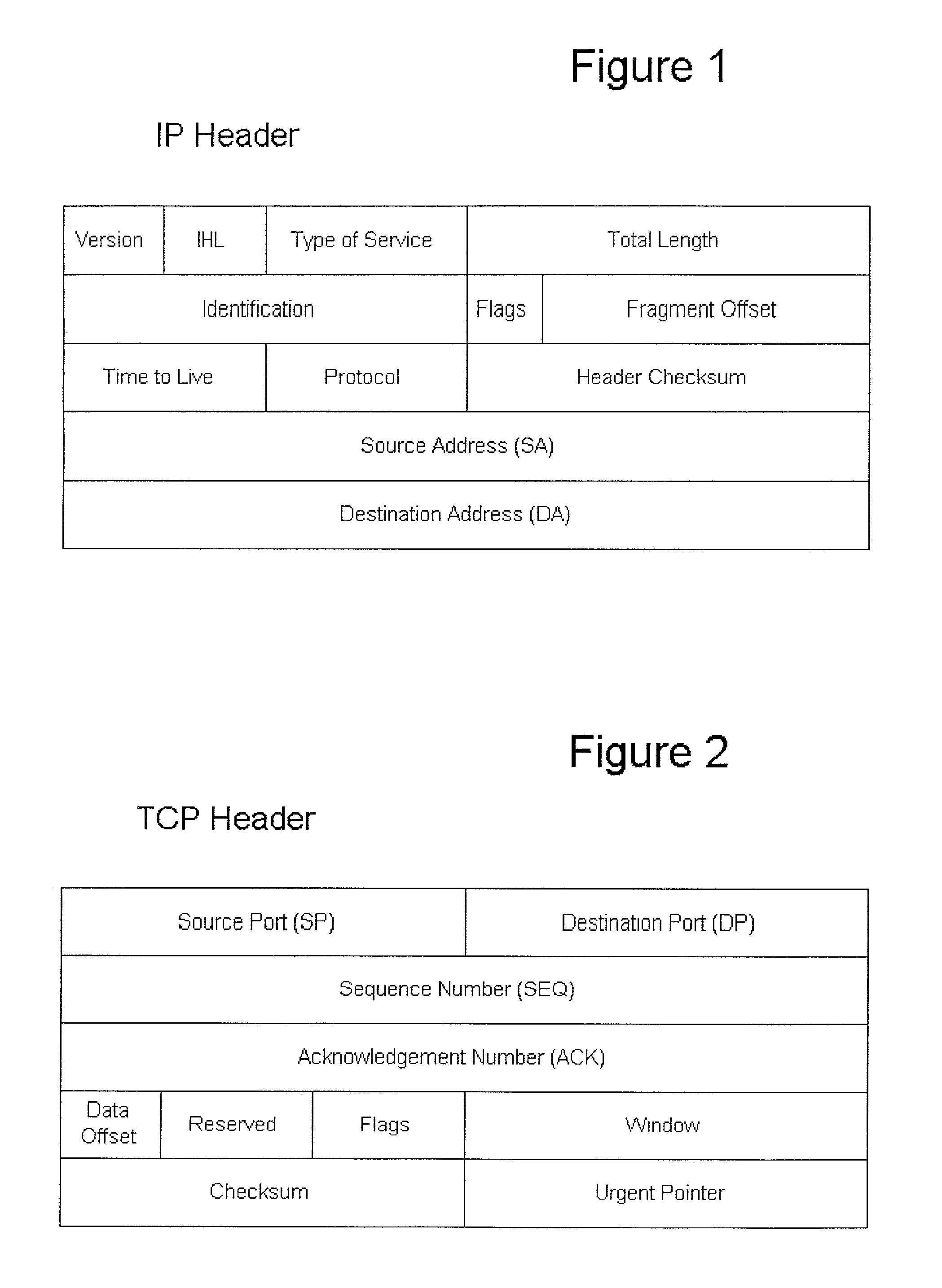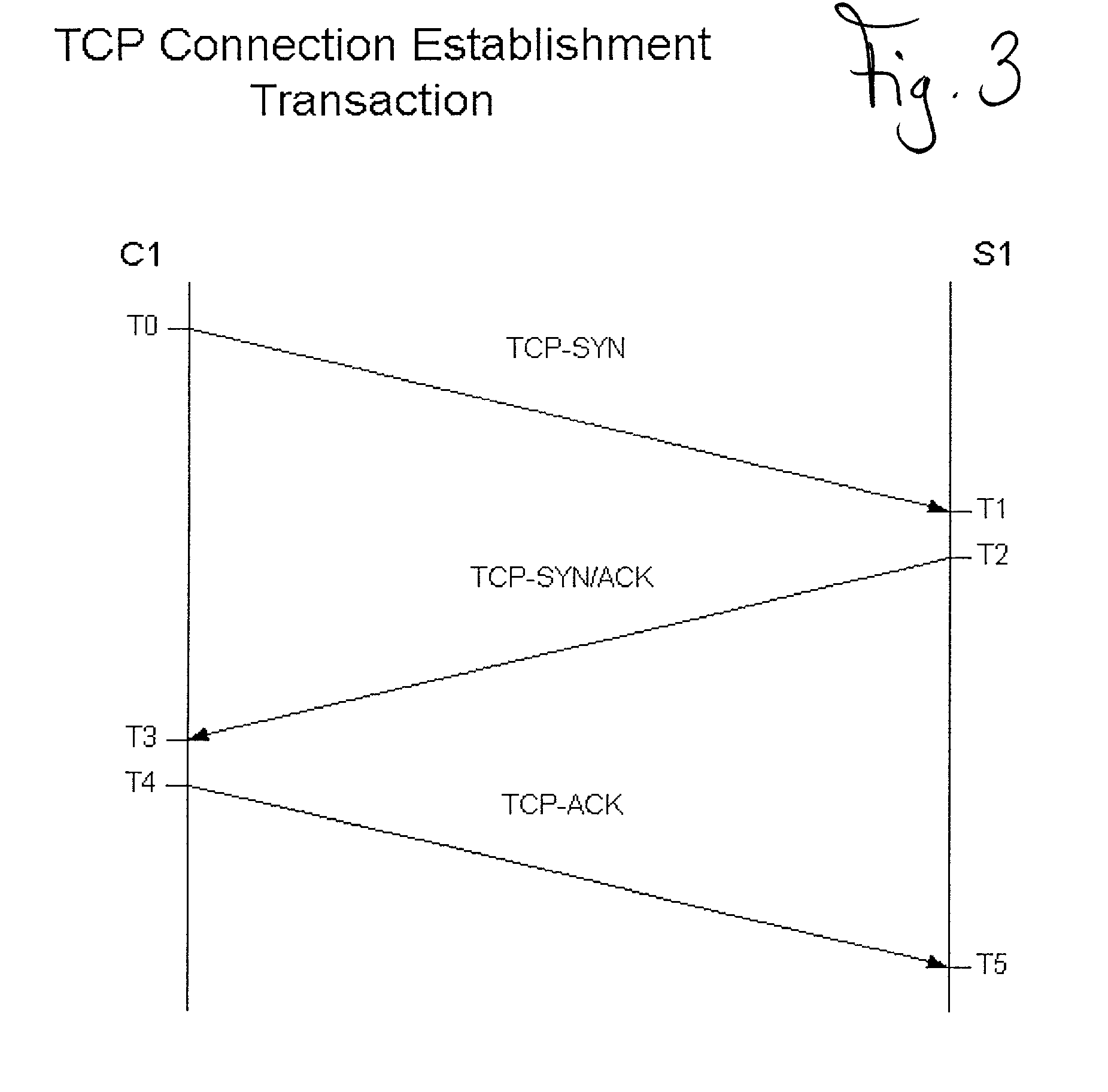Concealing a network connected device
a network connected device and network connection technology, applied in the field of network connected devices, can solve the problems of not working with dynamically allocated ip addresses, wasting time in timing out each request, and wasting time in scanning
- Summary
- Abstract
- Description
- Claims
- Application Information
AI Technical Summary
Benefits of technology
Problems solved by technology
Method used
Image
Examples
Embodiment Construction
I. Overview of the Invention
[0019]The present invention provides methods for concealing the existence of a device connected to a computer network or concealing the existence of certain applications running on a device connected to a computer network. This concealment works by validating a TCP connection request in the first packet of the connection request transaction using a validation key embedded within the TCP connection request.
[0020]In one preferred embodiment of the invention, the validation is performed by the receiving host computer.
[0021]In another preferred embodiment, the validation is performed by an intervening network firewall.
[0022]In an alternate embodiment, the validation is performed by an attached network device.
[0023]In a preferred embodiment, the validation key is inserted by the network device requesting the TCP connection.
[0024]In another preferred embodiment, the validation key is inserted by an intervening network firewall.
[0025]In an alternate embodiment, ...
PUM
 Login to View More
Login to View More Abstract
Description
Claims
Application Information
 Login to View More
Login to View More - R&D
- Intellectual Property
- Life Sciences
- Materials
- Tech Scout
- Unparalleled Data Quality
- Higher Quality Content
- 60% Fewer Hallucinations
Browse by: Latest US Patents, China's latest patents, Technical Efficacy Thesaurus, Application Domain, Technology Topic, Popular Technical Reports.
© 2025 PatSnap. All rights reserved.Legal|Privacy policy|Modern Slavery Act Transparency Statement|Sitemap|About US| Contact US: help@patsnap.com



